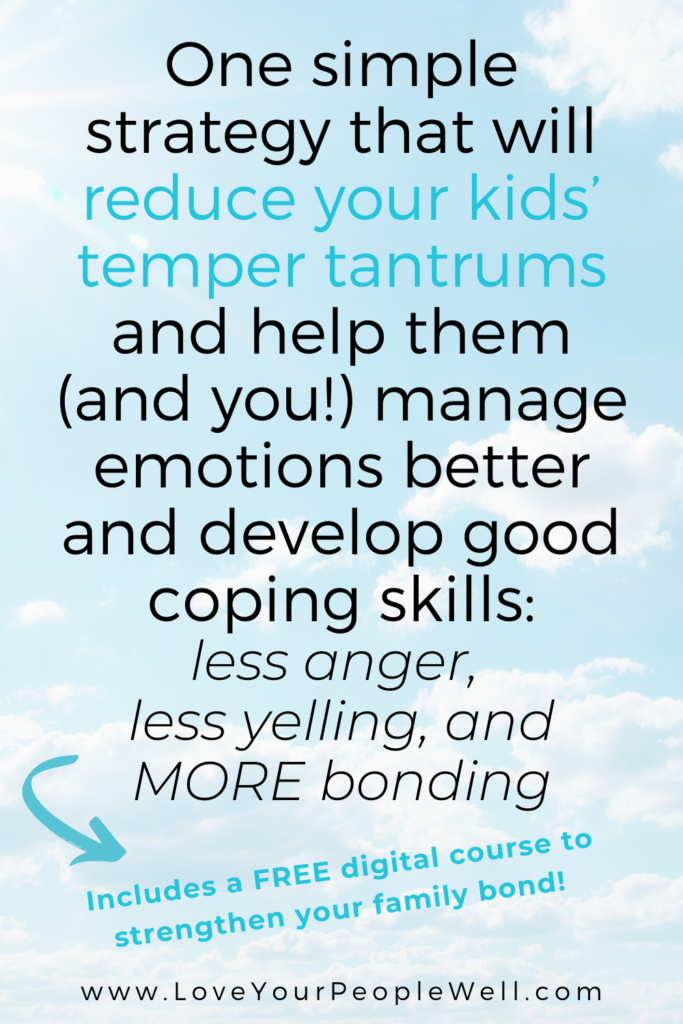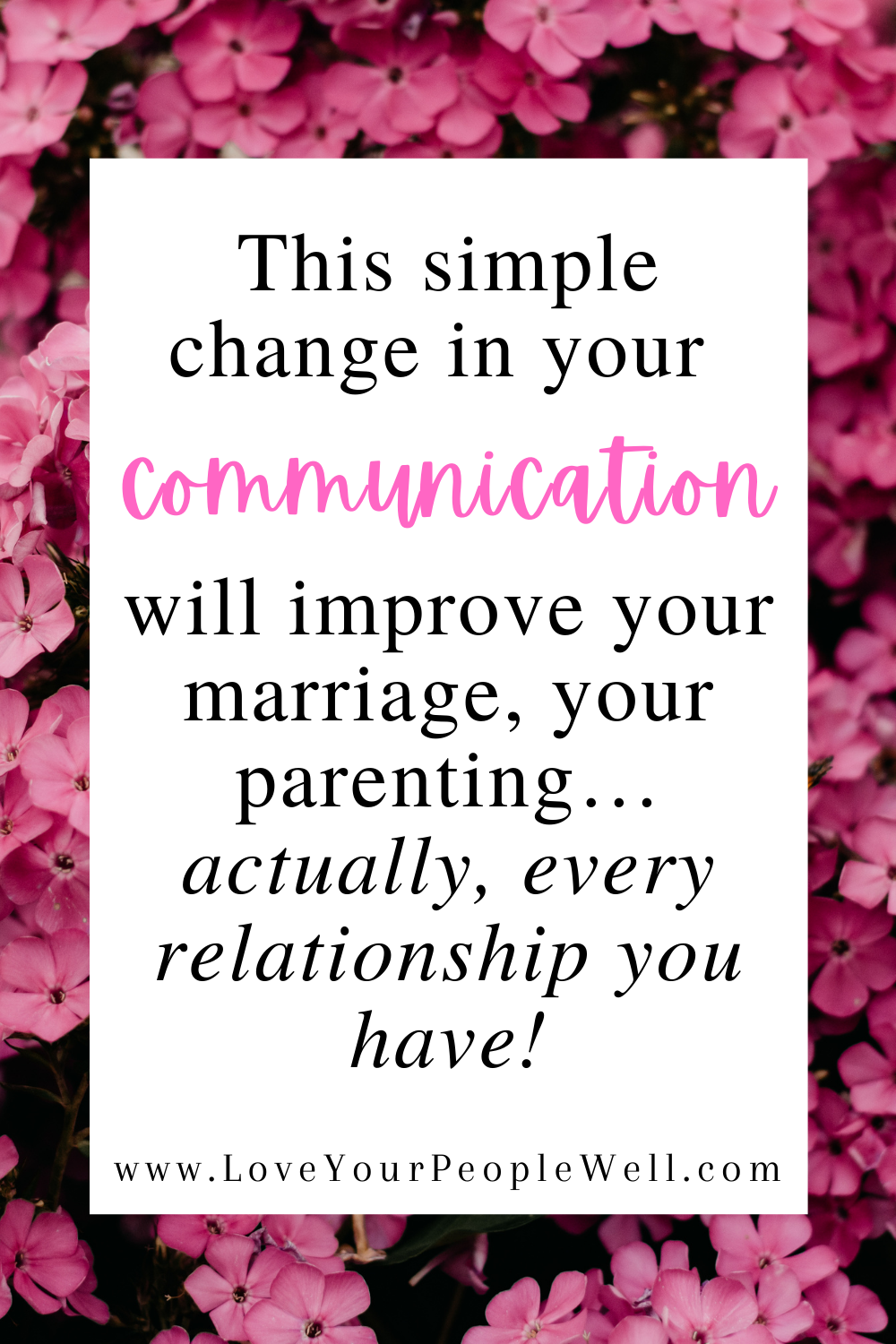What are we talking about today?
“I just love it when my toddler has a temper tantrum” … said no mom ever.
We love the happy emotions that come with kisses and giggles, but what can we do about those harder emotions that lead to screaming, kicking, and crying?
That’s exactly what we’re talking about today.
In this episode, I’m sharing one simple strategy that will help you reduce your kids’ tantrums and teach them better coping skills.
You’ll find a quick action step to help them learn more emotional control – and it will help you manage your own emotions better too! There’s a 3-step process for what to do when you notice the meltdown starting, but the strategy can be used anytime, anywhere, with anyone.
Ready for more peace-filled Sunday afternoons? Or at least… more confidence that you’re doing everything you can to help your kid grow up to be a successful, emotionally intelligent adult?
Let’s dive in.
Listen to Episode 38:
[This post may contain affiliate links. If a purchase is made, I may receive a small commission at no extra charge to you.]
Snag your resources here!
If today’s topic is meaningful for you, make sure to check out these other podcast episodes:
- Episode 31 // Keep your cool, mama! Here’s my quick 4-step process for handling frustration and impatience with my kids… no yelling, door slamming, or anger management necessary.
- Episode 23 // Why we all need intimacy in our family relationships – and how to get there!
- Episode 16 // This simple change in your communication will improve your marriage, your parenting… actually, every relationship you have!
And then, I’ve got some resource suggestions for you.
Join our free Facebook Group! This community of women is here to engage, encourage, and equip you to be the mama you want to be. Dare I say… the mama you need to be. If you struggle with emotions in your household, you are not alone! Pop into the group and share your questions, prayer requests, and ideas.
Finally, you’ll find a great resource in the 5 Tools Every Busy Mom Needs to Move Her Family From Autopilot to Intimacy: The Relationship Reset FREE 5-Day Email Course.
If you’re feeling stuck in a rut with your family relationships, this free email course will help you get out of the rut and reconnect. In less than 10 minutes a day, you’ll walk away with a clear action plan for what to try and how to stay encouraged along the way!

[This post may contain affiliate links. If a purchase is made, I may receive a small commission at no extra charge to you.]
Today's Episode Highlights
Our words are POWERFUL.
Let’s start our topic today with God’s own words… about our words.
My dear brothers and sisters, take note of this: Everyone should be quick to listen, slow to speak and slow to become angry, because human anger does not produce the righteousness that God desires. (James 1:19-20)
The strategy that we are talking about today aims to help us all live out this biblical call.
We do not want our children’s anger to distract them from the righteousness that God desires. We do not want our own anger to lead us down a path away from the righteousness that God desires.
So… how do we do that when our kiddo is melting down? When the temper tantrum is about to begin? When emotions are getting so big that we can’t see any realistic way to redirect them and calm things down?
We give them words.
Specifically, here’s the strategy we want to use:
- when we see that our kids emotions are rising, we want to help them build the emotional vocabulary to understand their experience and communicate their emotions more effectively.
That’s it.
Simple, yes… but not necessarily easy.
When your child is starting to get emotional – scared, angry, sad – we want to help them learn how to use their words better in that moment.
Building an emotional vocabulary
This strategy is simple, but it’s not easy. Emotions are hard to manage! If they’re hard for us, as mature adult women – at least, mature enough to be raising kids and caring about their own emotional experience! – of course they are hard for our little ones.
So let’s help them out.
But first things must come first… how is YOUR emotional vocabulary, mama?
We are all familiar with the main emotions: we feel sad, happy, surprised, angry. But there are nuances to each emotions. They exist on a spectrum.
Think about anger on a spectrum. There is a big difference between “I feel annoyed” and “I feel full of rage.” Yikes. If we understand the difference in our body and our experience, we are much more likely to successfully handle the feeling of annoyance and prevent it ever building to rage.
Words help us understand our inner experience.
If you are personally struggling to expand your own emotional vocabulary, you may want to check out this Feelings Wheel that I mentioned in the episode. You can find a ton online, and I don’t even remember where I got this one from but I hand out this copy in the counseling room sometimes when we are trying to increase our emotion words.
3 steps to respond to your kids emotions (and hopefully, prevent a tantrum)
In order to use this strategy well and help your kids build an emotional vocabulary that helps them calm down more effectively, there are three steps that will help you in the moment:
- Notice their emotions and when they are starting to get upset, name that emotion for them. Label it. This might be as simple as: “You are really frustrated.”
- Avoid judgment of that emotion. The feeling is not the problem! (Although their actions, like kicking or screaming, might be a problem that requires discipline afterward.)
- Give them a directed follow-up, which depends on the situation. This might be distracting them to a new activity, asking a question that helps them explore their emotional experience, or suggesting a calming activity like a hug or coloring.
With this process, you are labeling an emotion, accepting it for what it is, and helping them re-direct the emotion to a new calming activity.
And bonus… following this process will not only help them learn about their emotions, but it will probably help you calm down as well! It builds your empathy for and understanding of your child. And we all stay calmer when we feel like we have a game plan to follow.
Hey, before you go!
- Make sure you SUBSCRIBE to the podcast, so you don’t miss any future episodes.
- Share this episode with a friend who needs to hear it: you can text or email the link to her.
- Did this episode help you? Do you have questions or thoughts about what I shared today? Let’s me know! Send me a message on Instagram or Facebook.
Don't miss future episodes!
Subscribe now:
A reminder of the Disclaimers & Disclosures Policy: I am an affiliate with many of the resources I recommend, which means I may receive a small commission if you make a purchase through my provided links. I never recommend products I don’t love! Also, I am a licensed therapist but this podcast is not therapy. It is not professional or personal advice to your specific situation. Get info about professional counseling here.




